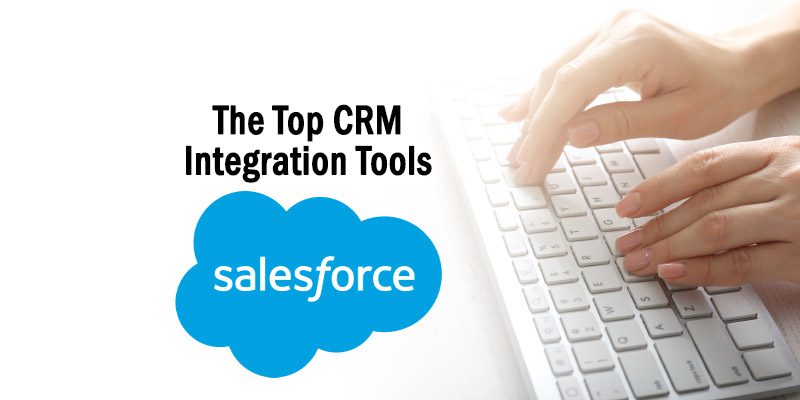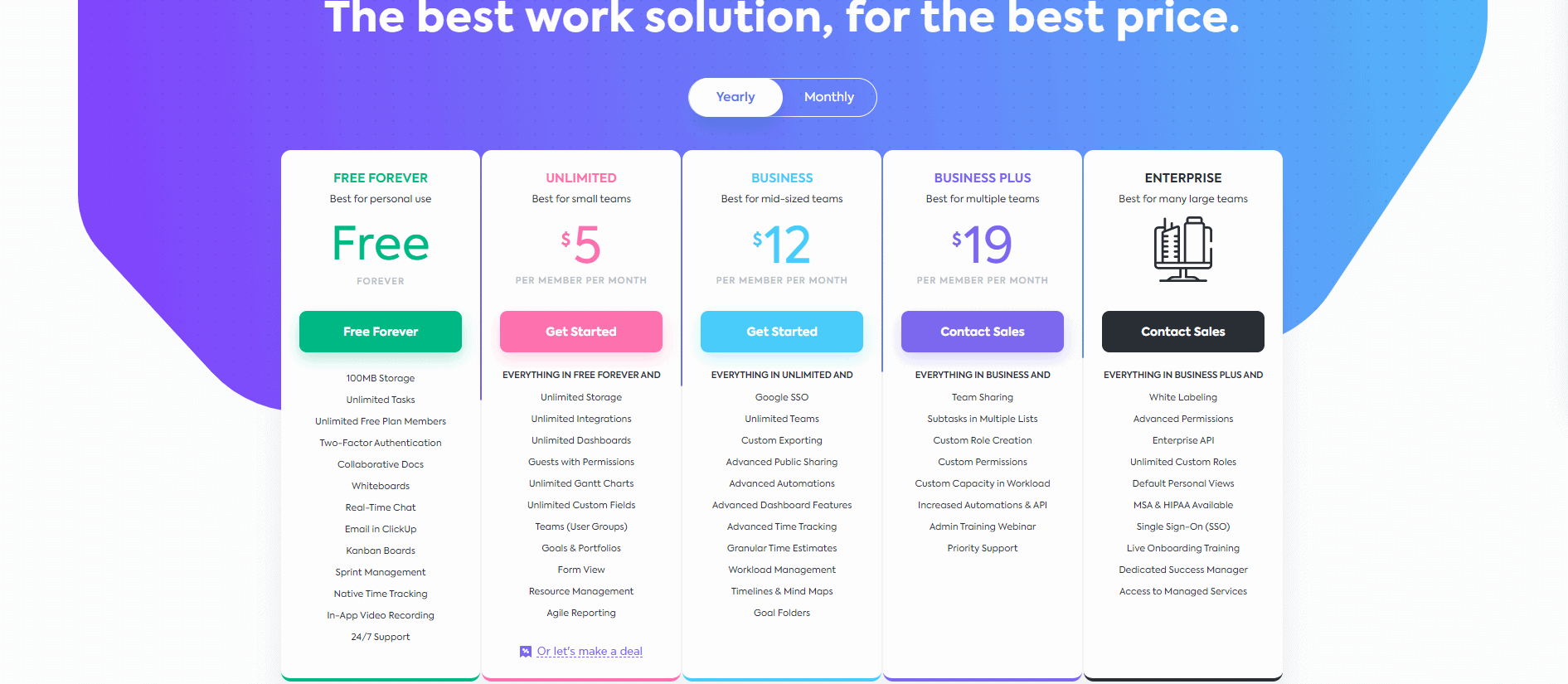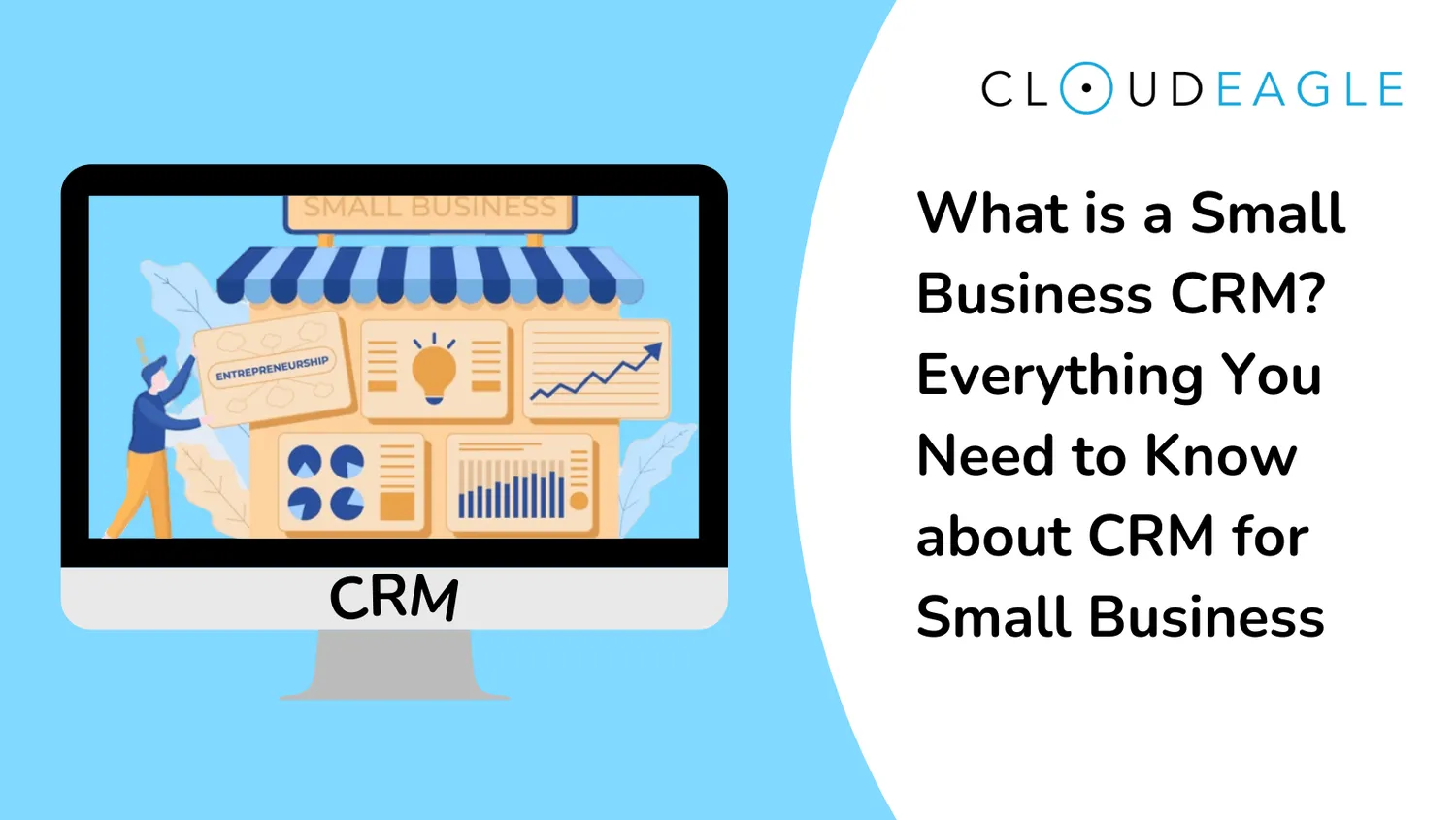
In today’s fast-paced business landscape, efficiency and customer satisfaction are paramount. Businesses are constantly seeking ways to streamline operations, improve communication, and ultimately, boost their bottom line. One of the most effective strategies for achieving these goals is through the implementation of Customer Relationship Management (CRM) integration tools. These tools act as the digital glue that connects various software applications, allowing data to flow seamlessly and empowering businesses to make informed decisions. This comprehensive guide will delve into the world of CRM integration tools, exploring their benefits, key features, various types, and how to choose the right ones for your specific needs. Get ready to transform your business and unlock its full potential!
What are CRM Integration Tools?
At its core, a CRM integration tool is a software solution designed to connect your CRM system with other business applications. Think of it as a central hub where all your customer data resides and can be accessed by different departments and teams. This integration allows for the synchronization of information, eliminating data silos and providing a unified view of your customers. Instead of manually transferring data between systems, which is time-consuming and prone to errors, integration tools automate this process, ensuring data accuracy and consistency.
These tools can integrate with a wide range of applications, including:
- Marketing Automation Platforms: Integrating with platforms like HubSpot or Marketo enables you to track marketing campaign performance, nurture leads, and personalize customer interactions.
- Email Marketing Software: Syncing with tools like Mailchimp or Constant Contact allows you to segment your email lists based on CRM data, send targeted campaigns, and track email engagement.
- Accounting Software: Integrating with accounting software such as QuickBooks or Xero provides a complete view of the customer lifecycle, from lead generation to sales and invoicing.
- E-commerce Platforms: Connecting to platforms like Shopify or WooCommerce enables you to track customer purchases, manage orders, and provide personalized shopping experiences.
- Help Desk Software: Integrating with help desk software such as Zendesk or Freshdesk allows you to track customer support interactions and resolve issues efficiently.
- Social Media Platforms: Some CRM integration tools can connect to social media platforms, allowing you to monitor brand mentions, track customer sentiment, and engage with customers directly.
The Benefits of CRM Integration Tools
The advantages of implementing CRM integration tools are numerous and far-reaching. Here are some of the most significant benefits:
Improved Efficiency and Productivity
One of the most immediate benefits is a significant boost in efficiency and productivity. By automating data transfer and eliminating manual tasks, your employees can focus on more strategic and value-added activities. For example, sales representatives no longer have to manually enter contact information or update sales opportunities in multiple systems. This frees up their time to focus on building relationships with customers and closing deals. Data entry errors are reduced, leading to more reliable and accurate information.
Enhanced Data Accuracy and Consistency
Data accuracy is critical for making informed business decisions. CRM integration tools ensure that data is consistent across all connected systems. When information is updated in one system, it’s automatically reflected in the others. This eliminates discrepancies and ensures that everyone in your organization is working with the same up-to-date information. This improved data quality leads to better decision-making, improved customer service, and more effective marketing campaigns.
Increased Sales and Revenue
By providing a 360-degree view of your customers, CRM integration tools empower your sales team to close more deals. Sales representatives can quickly access customer information, track interactions, and identify opportunities for upselling and cross-selling. Integrated marketing automation allows for personalized campaigns that resonate with customers, increasing conversion rates and driving revenue growth. The ability to track the entire customer journey, from lead generation to purchase, allows you to optimize your sales processes and identify areas for improvement.
Better Customer Service
Customer service is a key differentiator in today’s competitive market. CRM integration tools enable your support team to provide faster and more personalized customer service. Support agents can quickly access customer history, including past interactions, purchase history, and support tickets. This allows them to resolve issues more efficiently and provide a more satisfying customer experience. Integration with help desk software ensures that all customer interactions are tracked and managed effectively.
Improved Marketing ROI
Integrated marketing automation tools allow for highly targeted and personalized marketing campaigns. You can segment your audience based on CRM data, such as demographics, purchase history, and website behavior. This allows you to deliver relevant messages to the right customers at the right time, increasing engagement and conversion rates. By tracking campaign performance across all integrated systems, you can measure your marketing ROI and optimize your campaigns for maximum effectiveness. This data-driven approach helps you allocate your marketing budget more efficiently and achieve better results.
Streamlined Communication and Collaboration
CRM integration tools break down communication silos between departments. When all teams have access to the same customer data, it’s easier to collaborate and provide a seamless customer experience. Sales, marketing, and customer service teams can work together more effectively, sharing information and coordinating their efforts. This improved collaboration leads to better decision-making, faster problem resolution, and increased customer satisfaction.
Reduced Operational Costs
By automating tasks, reducing errors, and improving efficiency, CRM integration tools can help you reduce operational costs. Automating data entry, for example, frees up your employees to focus on more value-added activities. Improved data accuracy reduces the need to correct errors and resolve data inconsistencies. By streamlining your business processes, you can optimize your resource allocation and reduce overall operating expenses.
Key Features to Look for in CRM Integration Tools
When choosing a CRM integration tool, it’s important to consider the features that will best meet your specific needs. Here are some key features to look for:
Pre-built Integrations
Look for a tool that offers pre-built integrations with the applications you already use. This will save you time and effort in setting up the integrations. Check to see if the tool supports integrations with your CRM, marketing automation platform, email marketing software, accounting software, e-commerce platform, and help desk software.
Customization Options
The ability to customize the integrations is important, especially if you have unique business requirements. Look for a tool that allows you to map data fields, define rules, and customize workflows to meet your specific needs. This flexibility allows you to tailor the integrations to your business processes and ensure that the data is flowing correctly.
Data Mapping
Data mapping is the process of matching data fields between different applications. Make sure the tool allows you to easily map data fields to ensure that the data is synchronized correctly. This ensures that the right information is transferred between systems and that the data is displayed in the correct format. The ability to customize data mapping is crucial for complex integrations.
Real-time Synchronization
Real-time synchronization ensures that data is updated instantly across all connected systems. This is important for ensuring data accuracy and providing a unified view of your customers. Look for a tool that offers real-time synchronization or a very short synchronization interval.
Workflow Automation
Workflow automation allows you to automate tasks and processes, such as creating new contacts or updating sales opportunities. This can save you time and effort and improve efficiency. Look for a tool that offers robust workflow automation capabilities, allowing you to automate complex processes.
User-Friendly Interface
The tool should be easy to use and navigate. Look for an intuitive interface that allows you to easily set up and manage your integrations. A user-friendly interface will make it easier for your employees to use the tool and ensure that they can effectively manage the integrations.
Security Features
Data security is paramount. Make sure the tool offers robust security features, such as encryption and access controls, to protect your sensitive data. Ensure that the tool complies with relevant data privacy regulations.
Reporting and Analytics
The ability to track the performance of your integrations is important. Look for a tool that offers reporting and analytics capabilities, allowing you to monitor data synchronization, identify errors, and measure the impact of your integrations. This data-driven approach helps you optimize your integrations and make informed decisions.
Scalability
Choose a tool that can scale with your business. As your business grows, you’ll need a tool that can handle increasing data volumes and support more integrations. Make sure the tool can accommodate your future needs.
Customer Support
Look for a tool that offers excellent customer support. You’ll need support if you encounter any issues or have questions. Check the vendor’s reputation for customer support and ensure that they offer the support you need, whether it’s through email, phone, or live chat.
Types of CRM Integration Tools
There are several different types of CRM integration tools available, each with its own strengths and weaknesses. Here’s a look at some of the most common types:
Native Integrations
These are integrations built directly into the CRM system. They’re often the easiest to set up and use, as they’re specifically designed to work with the CRM. However, they may be limited in terms of the applications they support and the level of customization they offer. Native integrations are usually offered by the CRM provider themselves.
Third-Party Integration Platforms
These are platforms that connect your CRM to a wide range of other applications. They offer a broader range of integrations and more customization options than native integrations. Examples include Zapier, Integromat (now Make), and Tray.io. These platforms typically offer a user-friendly interface and pre-built integrations, making it easier to connect your systems.
Custom Integrations
These are integrations built specifically for your business needs. They offer the most flexibility and customization, but they also require more technical expertise and can be more expensive to develop and maintain. Custom integrations are typically developed by software developers or IT professionals.
API-Based Integrations
Application Programming Interfaces (APIs) allow different software applications to communicate with each other. API-based integrations use APIs to connect your CRM to other applications. This approach offers a high degree of flexibility and control, but it also requires technical expertise. API-based integrations are often used for more complex integrations that require a high level of customization.
Choosing the Right CRM Integration Tools for Your Business
Selecting the right CRM integration tools is a critical decision. Here’s a step-by-step guide to help you choose the best tools for your needs:
1. Define Your Goals and Requirements
Before you start looking at tools, take the time to define your goals and requirements. What do you want to achieve with CRM integration? What applications do you need to integrate? What data do you need to synchronize? Identifying your specific needs will help you narrow down your options and choose the tools that are the best fit for your business.
2. Assess Your Current Technology Stack
Take an inventory of the applications you currently use. What CRM system are you using? What marketing automation platform, email marketing software, accounting software, e-commerce platform, and help desk software do you use? Understanding your current technology stack will help you determine which integrations are most important and which tools are compatible with your existing systems.
3. Research and Evaluate Integration Tools
Once you know your goals and requirements, start researching different CRM integration tools. Compare their features, pricing, and customer reviews. Consider the different types of integration tools and which ones are the best fit for your needs. Read reviews, compare pricing plans, and evaluate the features offered by different vendors. Look for tools that offer pre-built integrations with the applications you use and that provide the customization options you need.
4. Consider Scalability and Future Needs
Choose a tool that can scale with your business. As your business grows, you’ll need a tool that can handle increasing data volumes and support more integrations. Think about your future needs and choose a tool that can accommodate your growth plans. Consider the vendor’s roadmap and ensure that the tool is continuously updated with new features and integrations.
5. Prioritize Security and Data Privacy
Data security is paramount. Make sure the tool offers robust security features, such as encryption and access controls, to protect your sensitive data. Ensure that the tool complies with relevant data privacy regulations, such as GDPR and CCPA. Review the vendor’s security policies and ensure that they take data security seriously.
6. Test and Pilot the Tools
Before you fully implement a CRM integration tool, test it out. Set up a pilot project to test the integrations and make sure they work as expected. This will allow you to identify any issues and make sure that the tool meets your needs. Involve key stakeholders in the testing process to gather feedback and ensure that the tool meets their requirements.
7. Provide Training and Support
Once you’ve chosen and implemented your CRM integration tools, provide training and support to your employees. Ensure that they understand how to use the tools and how to troubleshoot any issues. Provide ongoing support to ensure that your employees can effectively use the tools and get the most out of them. Consider offering regular training sessions to keep your employees up-to-date on the latest features and integrations.
Examples of Popular CRM Integration Tools
Here are some examples of popular CRM integration tools, categorized by their primary function:
For General Integration:
- Zapier: A popular no-code integration platform that connects thousands of apps. It’s known for its ease of use and extensive library of pre-built integrations.
- Make (formerly Integromat): A powerful platform that allows for complex integrations and automation workflows, often preferred by those seeking more advanced customization.
- Tray.io: A more enterprise-focused platform that offers advanced features and supports complex integration scenarios.
CRM-Specific Integrations:
- HubSpot Integrations: HubSpot offers a marketplace with integrations for various applications, including marketing, sales, and customer service tools.
- Salesforce AppExchange: Salesforce users have access to a vast marketplace of pre-built integrations and custom apps, allowing them to connect their CRM to a wide range of other applications.
- Zoho Marketplace: Zoho users can find integrations for various applications, including marketing, sales, and customer service tools.
Marketing Automation Integrations:
- Marketo Engage Integrations: Marketo offers integrations with various applications, including CRM, sales, and customer service tools.
- Pardot Integrations: Pardot offers integrations with various applications, including CRM, sales, and customer service tools.
These are just a few examples, and the best tool for you will depend on your specific needs and the applications you use.
Conclusion: Embracing the Power of CRM Integration
CRM integration tools are no longer a luxury; they are a necessity for businesses that want to thrive in today’s competitive market. By connecting your CRM with other business applications, you can streamline your operations, improve data accuracy, increase sales, enhance customer service, and boost your marketing ROI. Choosing the right tools and implementing them effectively can transform your business and unlock its full potential.
Remember to define your goals, assess your current technology stack, research and evaluate different tools, and prioritize security and data privacy. With the right CRM integration tools in place, you can empower your employees, delight your customers, and drive sustainable growth. So, take the first step today and explore the possibilities that CRM integration offers. Your business will thank you for it!


